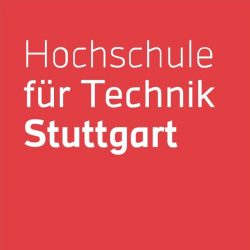Imagine walking onto the campus of Heilbronn University (in a city in southern Germany) and being greeted by a friendly robot called Temi. Temi will effortlessly navigate you around the campus, tell you what’s on the menu in the canteen and even help you find the right person to talk to. Sounds futuristic? Well, that’s exactly what this exciting research project was all about.
Robotic assistants or service robots are increasingly used in various fields to support humans in everyday tasks and interactions. This study investigated the acceptance of the robotic assistant „Temi“ on the educational campus in Heilbronn. The aim was to contribute to the successful implementation of the robot Temi on the educational campus.


Fotos: Martin Albermann
Research Goal
The main of this research was to investigate the acceptance of robots like Temi on the educational campus in Heilbronn and to find out which functionalities and characteristics are relevant for their further development. By taking into account the opinions and attitudes of the campus users, we were able to gain valuable insights that are of great importance for the future design and implementation of robots in comparable settings.
Research Overview
To achieve this goal, Marie Bauer, a business psychology student at our university, conducted a comprehensive study using a combination of research methods in an exploratory design. The study was conducted as part of the Smart Campus Initiative and in cooperation with Fraunhofer IAO. First, a qualitative study was conducted with two focus groups to gain deeper insights into the opinions and experiences of potential users. For each focus group, eight participants were recruited. These were made up of staff, students and visitors to the Heilbronn campus, in order to approximate the heterogeneous picture of the general user community of the campus. Secondly, a quantitative study was conducted with 230 participants, also consisting of these three target groups.
Sample Overview
The sample included people who regularly visited the campus as well as those who had never been there. This ensured that a wide range of perspectives and opinions were taken into account. The diversity of participants allowed for comprehensive and meaningful results. The majority of respondents were women (73.5%) aged between 19 and 26 (M=26). The majority of respondents had never been to the Heilbronn campus (70.4%). The remaining respondents were students (14.4%), employees (4.8%) or visitors (10.4%) to the Heilbronn Campus.
Main Findings
Overall, the acceptance of Temi on the educational campus was assessed as positive, although potential for improvement was also identified.
-
- Maximum Difference Scaling (MDS): The MDS analysis revealed that navigation & guidance, information, and verbal & visual directions had the highest relative importance ratings and are therefore the most important functionalities and features relevant to the further development of Temi on the educational campus. Features such as feedback, greeting & welcoming, individual personality of the robot and entertainment were considered less important. These are functions that aim at entertaining interaction and fun with the robot.
- Surprisingly, there were nearly no differences in the importance of features between regular campus users (students, staff, visitors) and those who had never been on campus.
- Other feature suggestions: The most common other suggestions for potential future features of Temi were making emergency calls, contacting first responders, a cleaning feature, and the ability to contact Temi through an app.
- Acceptance scores and factors: The acceptance of Temi on the educational campus was assessed as positive overall.
- Predictive quality of the model: The structural model achieved an R2 value of .73, which means that 73% of the variance in intention to use could be explained by the model. The path coefficients of the factors usefulness, enjoyment and personal attitude had a significant positive influence on intention to use.
- Descriptive values: Intention to use was rated positively on average (M = 3.77). The factors ease of use and facilitating conditions received the highest mean scores, while the factors social influence and personality received lower mean scores. Personal attitude, usefulness and enjoyment were in the positive middle range.
Implications
The results suggest that the further development of robots on educational campuses should initially focus on useful features for navigation, guidance and information provision. Features that focus on Temi’s entertainment can be neglected for the time being, based on the results of this study.
To increase acceptance, entertaining functions and features in the areas of usefulness, fun and personal attitude of the users should be integrated into the interaction with the robot. Privacy and data protection measures should be implemented to increase user confidence and further increase acceptance.
Conclusion
This research provided valuable insights into the acceptance and relevant functionalities of robots such as Temi on educational campuses. The results show that robots can play a promising role in education by helping users navigate the campus and providing useful information.
This research opens up new perspectives for the integration of robots in educational settings and raises exciting questions: How can robots like Temi enhance learning and everyday life on campus? How can we ensure that they respond to individual user needs? The future of education may be robotic, and this study is a first step in that exciting direction.

